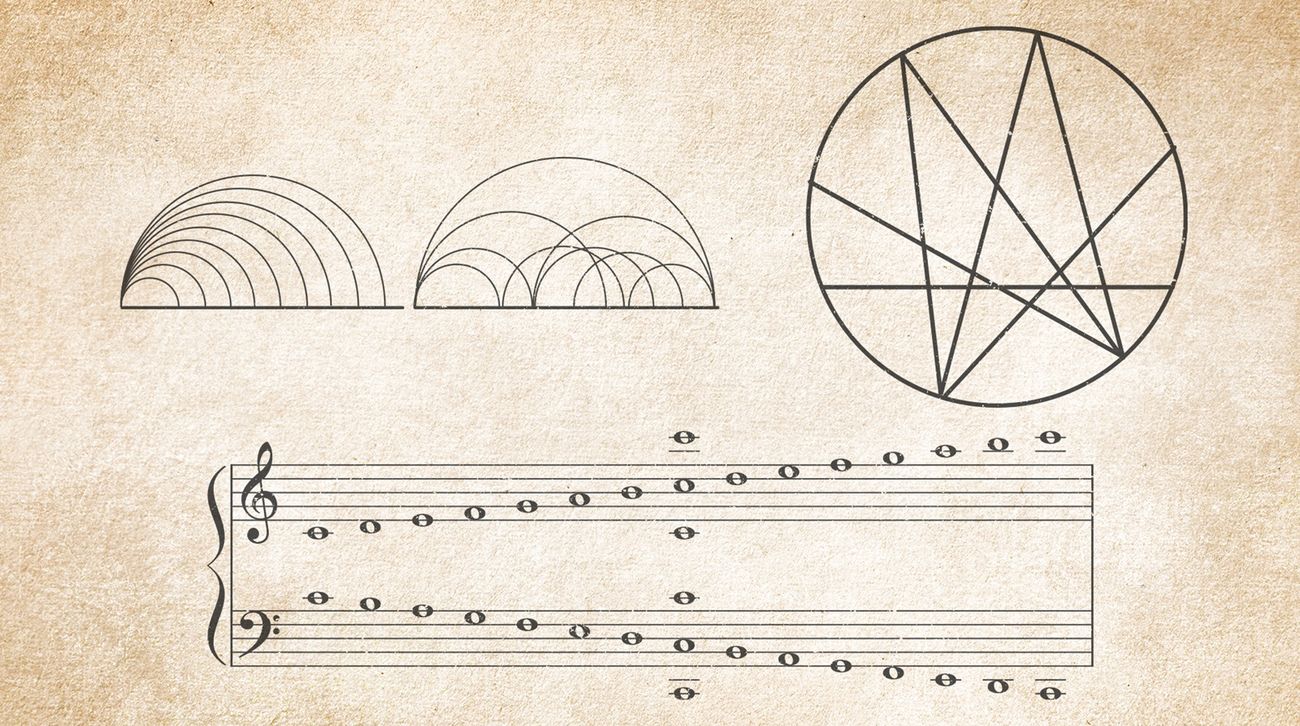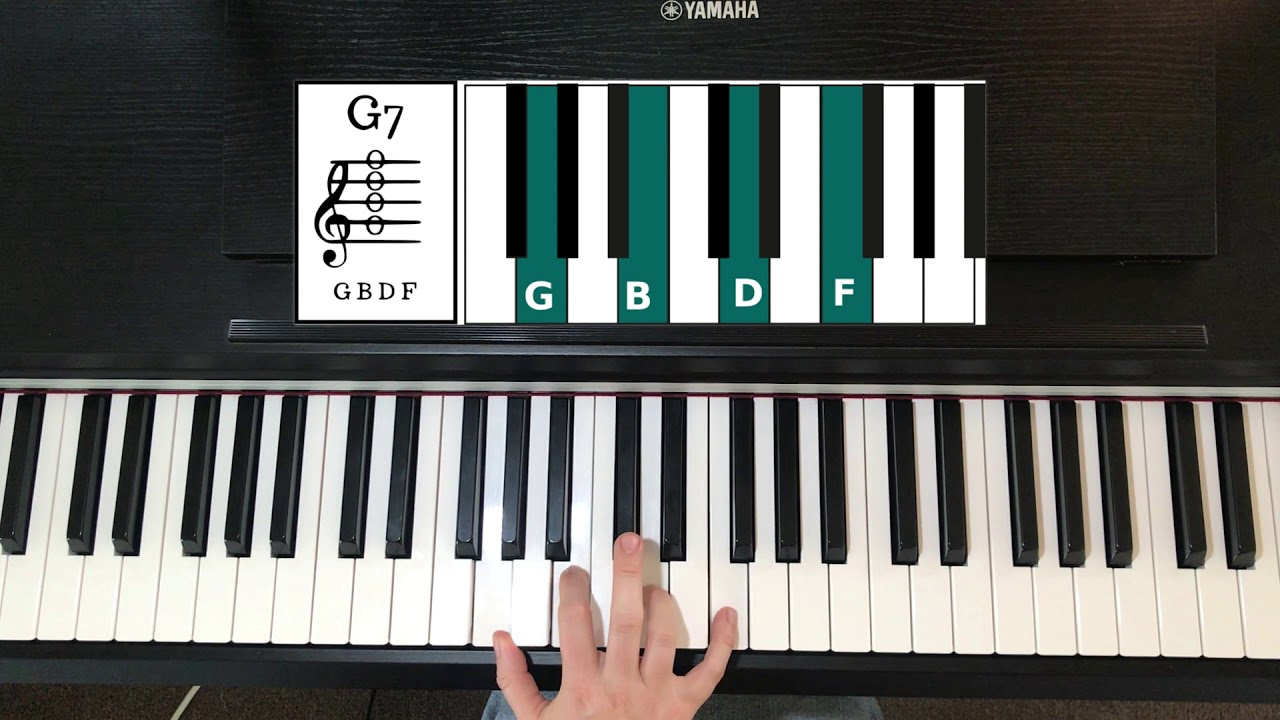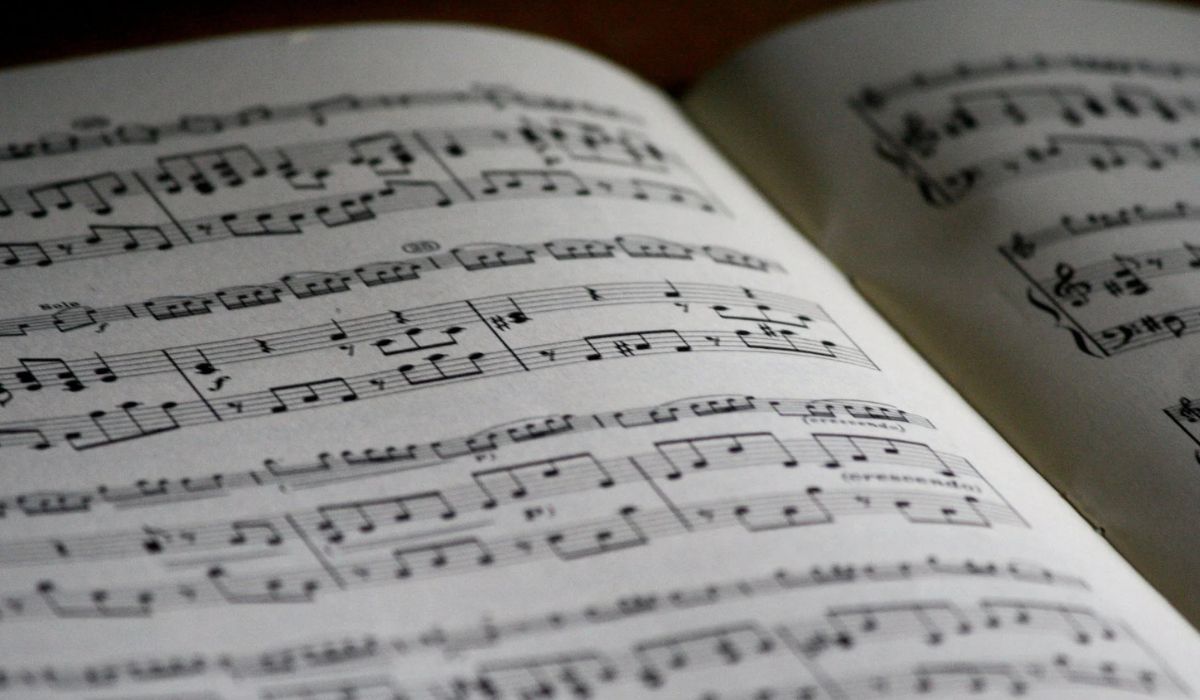Home>Production & Technology>Music Theory>What Can Each Chord Go To Chart Music Theory


Music Theory
What Can Each Chord Go To Chart Music Theory
Published: January 30, 2024
Learn how to navigate the world of music theory with our comprehensive "What Can Each Chord Go To" chart. Enhance your musical knowledge and expand your chord progression possibilities with this helpful resource.
(Many of the links in this article redirect to a specific reviewed product. Your purchase of these products through affiliate links helps to generate commission for AudioLover.com, at no extra cost. Learn more)
Table of Contents
- Introduction
- Understanding Chord Progressions
- Major Chords and their Possible Progressions
- Minor Chords and their Possible Progressions
- Dominant Chords and their Possible Progressions
- Diminished Chords and their Possible Progressions
- Augmented Chords and their Possible Progressions
- Suspended Chords and their Possible Progressions
- Conclusion
Introduction
Music theory is an essential foundation for understanding the structure and relationships between notes, chords, and melodies in music. One key aspect of music theory is chord progressions, which provide the framework for creating harmonically pleasing compositions.
Chord progressions are a series of chords played in a specific order, forming the backbone of a song. Understanding how chords relate to each other allows musicians to create harmonies that evoke different emotions and moods.
In this article, we will explore the concept of chord progressions and examine the possible progressions for different types of chords. Whether you are a beginner songwriter or an experienced musician looking to expand your knowledge, this article will provide insights into the versatility and possibilities of chord progressions.
By understanding the potential progressions for each type of chord, you’ll have a clearer understanding of which chords work well together in a particular musical context. This knowledge will guide your composition process, enabling you to make intentional choices that enhance the overall musical expression.
Throughout the article, we will explore major chords, minor chords, dominant chords, diminished chords, augmented chords, and suspended chords. By examining the characteristics and possibilities of these chord types, you will gain valuable insights into the harmonic choices available to you as a composer or musician.
Let’s dive into the world of chord progressions and unravel the fascinating relationships between chords in the realm of music theory.
Understanding Chord Progressions
Before delving into specific chord progressions, it’s important to understand the basic principles behind chord progressions. Chord progressions are the systematic movement of chords in a musical piece, creating a sense of tension, release, and movement. They serve as the foundation for the overall harmonic structure.
In most Western music, chord progressions follow certain patterns and conventions. These patterns are often based on the key or tonality of the song, which establishes a set of notes and chords that work together harmonically.
The most common chord progressions are built using triads, which consist of three notes: the root, the third, and the fifth. The root determines the name of the chord, while the third and fifth determine its quality (major, minor, augmented, or diminished).
A chord progression can be as simple as two chords repeating in a loop, or it can be complex, incorporating multiple chords and variations. The choice of chord progression can greatly influence the mood and emotion of a song.
One important concept in chord progressions is the idea of tension and release. Tension is created by using chords that create a sense of instability or dissonance. Release is achieved by resolving the tension through a chord that brings a sense of resolution and stability.
Understanding chord progressions allows musicians to anticipate and create moments of tension and release, adding depth and emotional impact to their compositions.
Next, we will explore the possible progressions for different types of chords, beginning with major chords.
Major Chords and their Possible Progressions
Major chords are one of the most common chord types used in music. They have a bright and uplifting sound, often associated with feelings of happiness and contentment. Major chords are built using the root, major third, and perfect fifth.
When it comes to chord progressions, major chords have various possibilities depending on the musical context and desired mood. One common progression is the I-IV-V progression, which is widely used in pop, rock, and blues music.
The I-IV-V progression refers to the chords built on the first, fourth, and fifth degrees of the major scale. For example, in the key of C major, the I-IV-V progression would consist of the C, F, and G major chords. This progression creates a strong and stable foundation for many songs.
Another popular progression is the ii-V-I progression, commonly found in jazz and other sophisticated genres. This progression involves the chords built on the second, fifth, and first degrees of the major scale. For instance, in the key of C major, the ii-V-I progression would consist of the Dm, G, and C major chords.
Major chords can also be used in chord inversions, where the root note is not the lowest pitched note in the chord. Inversions can provide smooth voice leading and add variation to chord progressions.
Furthermore, major chords can be enhanced by adding extensions such as seventh, ninth, or thirteenth. These extensions add complexity and richness to the chord, creating more colorful and interesting progressions.
Overall, major chords offer a wide range of possibilities for chord progressions. They can be used to create catchy and upbeat melodies or evoke emotions of joy and optimism. When combined with other chord types, major chords play an integral role in shaping the overall harmonic progression of a song.
Next, we will explore the possible progressions for minor chords, which have a melancholic and introspective quality.
Minor Chords and their Possible Progressions
Minor chords have a distinct character that often evokes feelings of melancholy, sadness, or introspection. They are commonly used in various musical genres, including classical, rock, and pop.
Similar to major chords, minor chords are made up of three notes: the root, minor third, and perfect fifth. The minor third gives these chords their unique and somber sound.
When it comes to chord progressions, minor chords offer a range of possibilities that can create different emotional landscapes within a song.
A popular progression involving minor chords is the i-iv-v progression. This progression is commonly found in minor keys and creates a sense of stability and resolution by emphasizing the tonic or root chord. For example, in the key of A minor, the i-iv-v progression would consist of Am, Dm, and Em chords.
Another common progression is the vi-ii-V-I progression. This progression is frequently used in jazz, pop, and rock music and provides a sense of resolution and closure. In the key of C major, the vi-ii-V-I progression would include the chords Am, Dm, G, and C.
Minor chords can also be used in modal interchange, where chords from parallel major keys are borrowed to add texture and tension. For example, in the key of C major, borrowing the bVII or a major chord from the parallel minor key (C minor) can create a darker and more intense atmosphere.
Minor chords can also be combined with major chords to create contrasting and dynamic progressions. For instance, using a major IV chord in a minor key can add a sense of brightness and uplift to the composition.
It’s worth noting that minor chords can also be enhanced with extended or altered notes, such as adding a seventh or a ninth, to create more complex and nuanced progressions.
Overall, minor chords offer a wide range of possibilities in chord progressions, allowing musicians to express a variety of emotions and moods. With their distinct sound, minor chords play a crucial role in shaping the emotional landscape of a musical composition.
Next, let’s explore the possibilities of dominant chords and their progressions.
Dominant Chords and their Possible Progressions
Dominant chords are powerful and versatile chords commonly used in various genres of music, including jazz, blues, and classical. They create tension and demand resolution, making them essential in creating dynamic and compelling chord progressions.
Typically, dominant chords are built using the root, major third, perfect fifth, and minor seventh. The combination of these intervals creates a distinctive and recognizable sound.
One of the most common progressions involving dominant chords is the V-I progression, also known as the “cadential” or “authentic” progression. In this progression, the dominant chord (denoted by the Roman numeral V) resolves to the tonic chord (denoted by the Roman numeral I). For example, in the key of C major, the V-I progression would be the G7 resolving to the C major chord. This progression brings a sense of resolution and completion.
Another popular progression is the ii-V-I progression, which was mentioned earlier in the section on major chords. In this progression, the dominant chord functions as a transition between the ii (minor) chord and the I (major) chord. For instance, in the key of C major, the ii-V-I progression would involve the chords Dm7-G7-C. This progression is extensively used in jazz music and provides a satisfying resolution.
Dominant chords can also be extended with additional notes or altered to create more complexity. Common extensions include the ninth, eleventh, and thirteenth, which add color and texture to the chord. Altered dominant chords introduce chromaticism by raising or lowering certain intervals, creating tension and interest.
It’s worth noting that dominant chords can have substitute chords that function similarly and offer additional possibilities for progressions. For instance, the tritone substitution replaces the V chord with a chord that is a tritone (augmented fourth or diminished fifth) away. This substitution adds a unique harmonic flavor and helps to create interesting and unexpected progressions.
Dominant chords are essential in creating tension and leading to resolutions in chord progressions. Their versatility and unique characteristics make them a valuable tool for musicians to add excitement and energy to their compositions.
Next, let’s explore the possibilities of diminished chords and their progressions.
Diminished Chords and their Possible Progressions
Diminished chords have a distinct and somewhat mysterious quality to them. They are often used to create tension and instability in music. Diminished chords are built using the root, minor third, and diminished fifth.
When it comes to progressions, diminished chords have interesting possibilities that can add complexity and intrigue to a composition.
One common progression involving diminished chords is the diminished seventh chord leading to a tonic chord. This progression is often referred to as the “diminished seventh chord leading tone” progression. Diminished seventh chords have a symmetrical structure that allows them to resolve smoothly to a chord a half-step higher. For example, in the key of C major, the Bdim7 chord can lead to the C major chord, creating a sense of resolution.
Diminished chords can also function as passing chords or transitional chords in progressions. They can be used to connect two chords by creating a chromatic movement. For example, in a ii-V-I progression in the key of C major, a diminished chord could be placed between the ii chord (Dm7) and the V chord (G7) to add tension and create a smoother transition.
Additionally, diminished chords can be used as substitutions for other chords. The diminished chord is symmetrical, meaning that any note within the diminished chord can function as the root of another diminished chord. This property opens up possibilities for chord substitutions in various progressions.
Furthermore, diminished chords can be used in modulation, where the key changes within a piece of music. Modulating using diminished chords can create a sense of uncertainty and tension before transitioning to a new key.
Diminished chords can also be altered by adding extensions or altering certain intervals, further enhancing their dissonant and intriguing nature.
Overall, diminished chords offer a unique and captivating sound in chord progressions. Their ability to create tension, serve as passing chords, and function as substitutions makes them a valuable asset for composers and musicians seeking to add complexity and interest to their music.
Next, let’s explore the possibilities of augmented chords and their progressions.
Augmented Chords and their Possible Progressions
Augmented chords have a distinctive and rich sound that adds a touch of tension and uniqueness to music. They are built using the root, major third, and augmented fifth – creating an interval of an augmented fourth or an augmented fifth.
When it comes to chord progressions, augmented chords offer intriguing possibilities for composers and musicians.
An augmented chord can serve as a substitution for a major chord, adding a sense of tension and unexpectedness to a progression. For example, in a standard I-IV-V progression in the key of C major, substituting the IV chord (F major) with an augmented chord (Faug) can create a fascinating harmonic shift.
Additionally, augmented chords can function as passing chords or transitional chords in progressions. They can create chromatic movement and smooth transitions between two chords by half-step motion. Their unique sound can be used to add interest and create a sense of movement in the music.
Augmented chords can also be used in modulation, where the key changes within a musical piece. Including an augmented chord in the transition can help establish a new key and create an exciting shift in the overall harmonic progression.
Moreover, augmented chords can be combined with other chord types, such as dominant chords, to create even more intricate and complex progressions. This allows for experimentation with different tonal colors and moods.
Enhancing augmented chords with additional notes or extensions can further enrich their sound. For example, adding a seventh or a ninth to an augmented chord can create a more lush and sophisticated texture.
Furthermore, augmented chords can be used in sequences, where a musical phrase or chord progression is repeated at different pitch levels. Augmented chords are particularly effective in creating tension and heightening the emotional impact of a sequence.
In summary, augmented chords bring a sense of tension, intrigue, and uniqueness to chord progressions. Their ability to substitute, enhance, and create chromatic movement offers a wide range of possibilities for composers and musicians seeking to explore unconventional and captivating musical landscapes.
Next, let’s explore the possibilities of suspended chords and their progressions.
Suspended Chords and their Possible Progressions
Suspended chords add a unique and interesting flavor to music. They are often used to create a sense of anticipation and release. Suspended chords are built using the root, major second or major fourth, and perfect fifth.
When it comes to chord progressions, suspended chords offer a variety of possibilities that can add tension and color to a composition.
One common progression involving suspended chords is the sus4 resolving to a major or minor chord. The sus4 chord creates a temporary suspension of the tonic chord’s third, adding a sense of tension and anticipation. The resolution to the major or minor chord then brings a feeling of release and stability. For example, in the key of C major, replacing the C major chord with Csus4 and resolving it to C major can create a pleasing progression.
Another popular progression is the sus2 sus4 progression. This progression alternates between a suspended second and a suspended fourth chord before resolving to a major or minor chord. This sequence can add complexity and interest to a composition, creating a sense of continuous movement and anticipation.
Suspended chords can also be used to harmonize melodies. By choosing a suspended chord that fits the melody notes, composers can add depth and emotion to their music. This technique is often seen in film scores and contemporary pop music.
Furthermore, suspended chords can be used as embellishments within a larger chord progression. By inserting a suspended chord before the expected chord change, musicians can create a moment of tension and surprise. This technique can help to build anticipation and maintain listener engagement.
Suspended chords can also be combined with other chord types, such as dominant or major chords, to add color and texture to progressions. The interplay between suspended chords and other harmonies can create a sense of contrast and provide a unique harmonic landscape.
In summary, suspended chords offer a wide range of possibilities for chord progressions, adding tension, anticipation, and unique tonal colors to music. By incorporating suspended chords strategically, composers and musicians can create fascinating and engaging musical experiences.
Now, let’s conclude our exploration of chord progressions and their possibilities.
Conclusion
Chord progressions play a crucial role in music composition and understanding them is essential for musicians and songwriters. Throughout this article, we have explored the possibilities for chord progressions with major chords, minor chords, dominant chords, diminished chords, augmented chords, and suspended chords.
Major chords provide a bright and uplifting sound, with progressions like the I-IV-V often used in popular music. Minor chords evoke a sense of melancholy and introspection, offering progressions like the i-iv-v that create a stable foundation.
Dominant chords bring tension and demand resolution, as seen in progressions like the V-I. Diminished chords add intrigue and unpredictability, resolving smoothly through diminished seventh chords leading to the tonic.
Augmented chords create tension and can be used as substitutions or passing chords, adding a unique harmonic flavor. Suspended chords create anticipation and release, with progressions involving sus4 and sus2 chords providing a sense of movement.
Understanding chord progressions allows musicians to express a wide range of emotions and moods, from joy and optimism to sadness and tension. By combining and experimenting with different types of chords, composers and musicians can create captivating and engaging compositions.
It’s important to remember that these progressions are not strict rules, but rather guidelines for creating harmonically pleasing music. Musicians have the freedom to explore and be creative, adapting and modifying these progressions to suit their artistic vision.
Whether you’re a beginner songwriter or an experienced musician, having a solid understanding of chord progressions can greatly enhance your musical expression. So, dive into the world of chord progressions, experiment with different combinations, and let your creativity soar.











